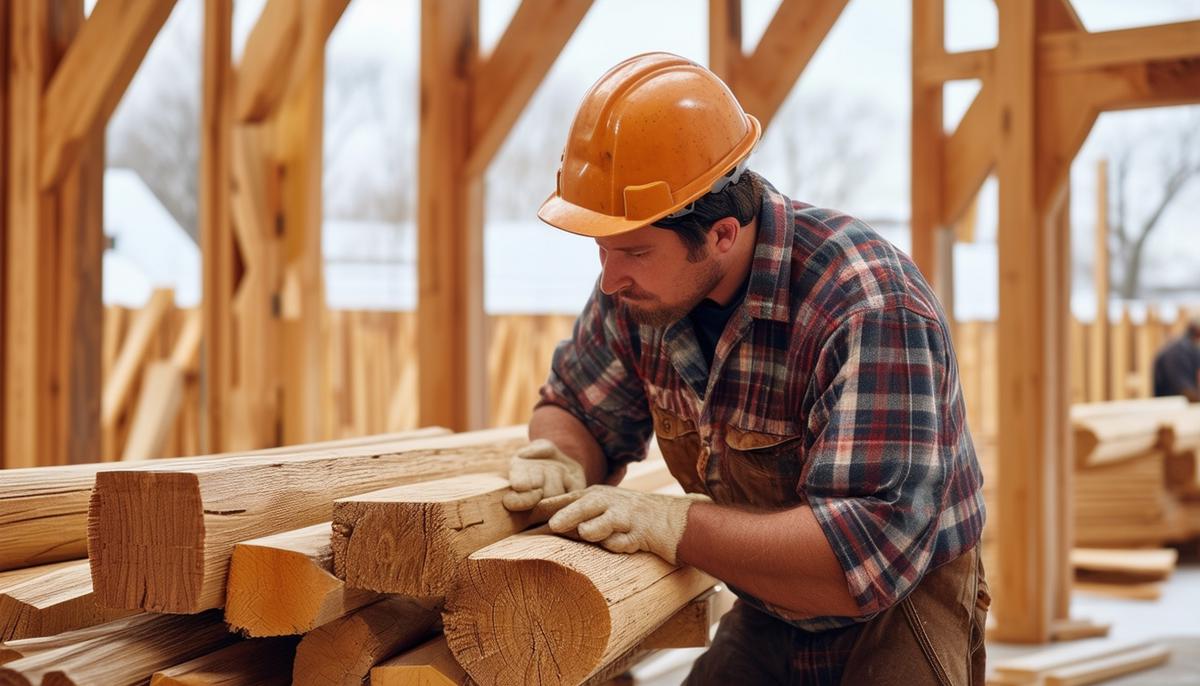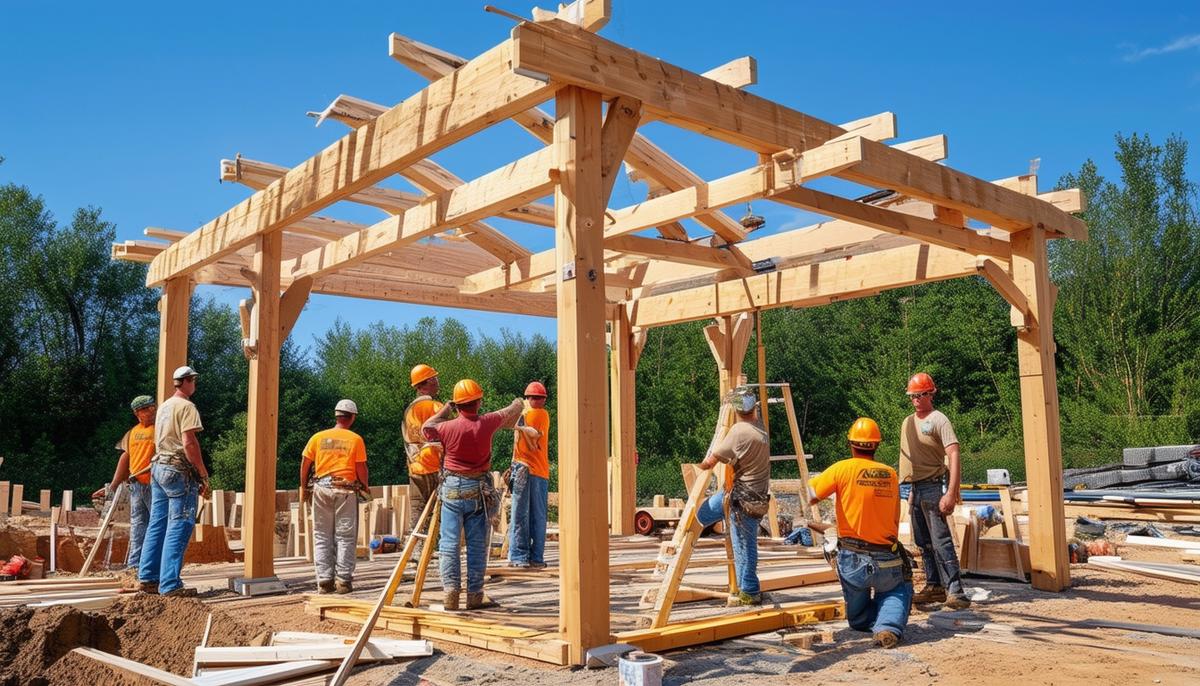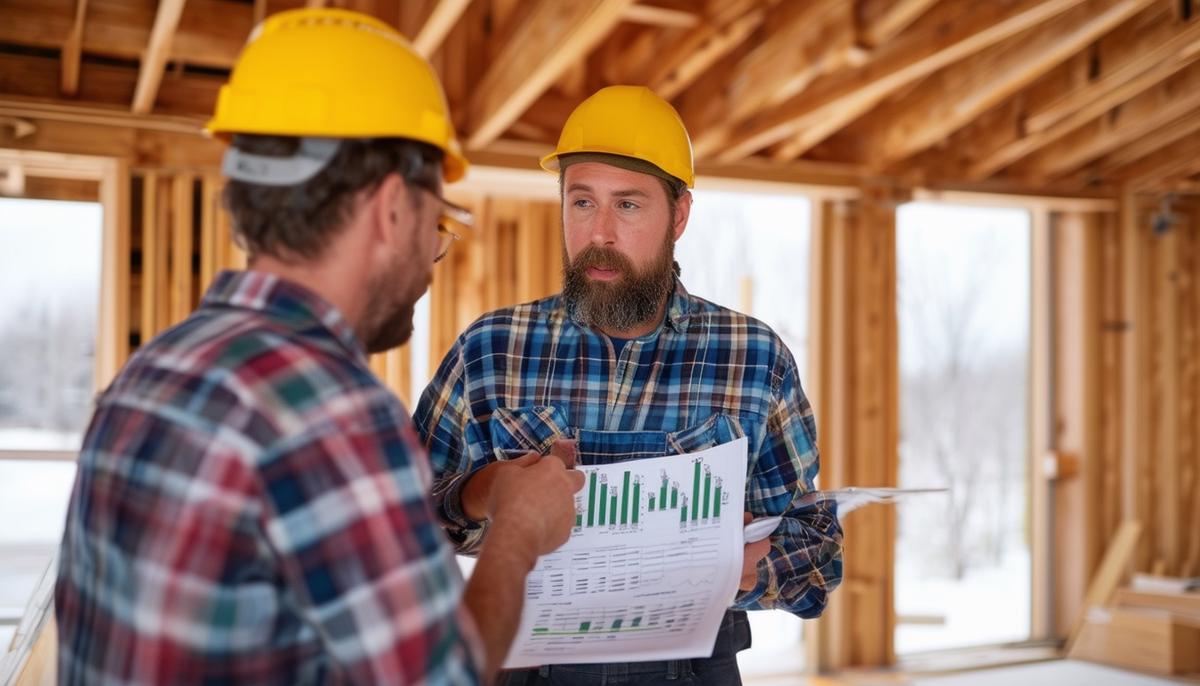Timber Selection
Picking the right timber for post and beam construction is crucial. Oak is tough and exudes rustic charm, while pine is lighter but still solid. For posts, use at least 6×6 inches. Beams need to be thicker and wider, often around 8×8 or 10×10 inches, especially for longer spans.
Green wood, particularly oak, performs well under load and resists pests when treated properly. It's flexible and easy to work with. Always set your boards crown-side up to keep beams straight over time.
Measure twice, cut once. Precision is key when preparing timbers. Consider using sustainably sourced or reclaimed wood for environmental impact.
Proper Timber Storage:
- Keep off the ground
- Cover but ensure ventilation
- Use simple racks or blocks

Joinery Techniques
In post and beam construction, metal fasteners and connectors join heavy timbers. The half-lap joint is a classic technique involving cutting two pieces of timber to half their thickness at the ends and overlapping them. Ensure cuts are precise and fit snugly, then secure with bolts or screws.
Steel plates and bolts are essential for distributing weight and providing reliable anchor points. Use galvanized or powder-coated steel plates to prevent rust. Angle brackets and heavy-duty screws are useful for creating secure joints where two beams meet at a right angle.
For a cleaner look, recess plates into the timber.
Regularly check and maintain metal fasteners and connectors, especially when exposed to the elements. Replace worn or rusted pieces promptly to maintain structural integrity and safety.

Erection Process
- Lay out your foundation, ensuring it's level and sturdy.
- Position posts in a grid pattern, roughly ten feet apart.
- Use 6×6 timbers for posts and brace them properly to keep them plumb.
- Align posts with horizontal cleats to support beams.
- Use a laser level to mark cleat positions and beam heights.
- Raise beams onto the cleats, positioning them crown-side up.
- Secure beams to posts with solid fasteners, typically using a combination of 16d nails and 3-inch screws.
Install additional support elements like doubled 2×6 studs for added stability. Add center bracing between posts for rigidity. For large openings, use diagonal bracing and headers made from sturdier lumber.
Add joists, typically 2x10s spaced 24 inches apart with bridging, to support upper stories. Secure each joist using joist hangers.
Apply sealant to timber if the structure can't be dried in before harsh weather hits.

Cost Considerations
Post and beam construction can be pricier than other methods. Key cost factors include:
| Factor | Description |
|---|---|
| Labor | Skilled craftsmen specializing in heavy timber work command higher wages. |
| Materials | Heavy timbers cost more than standard lumber. Factor in drying and treatment costs for green wood. |
| Metal connectors | High-quality, rust-resistant fasteners are essential but expensive. |
| Design complexity | Intricate designs increase both material and labor costs. |
| Equipment | Heavy-duty tools like hoists or cranes may be needed. |
| Environmental protection | Sealants, covers, or temporary shelters protect materials during construction. |
Consider setting aside a contingency fund of 10-15% for unexpected expenses. While post and beam construction requires a higher financial investment, it offers excellent aesthetic and structural benefits.

Sustainability and Longevity
Post and beam construction is renowned for its sustainability, benefiting both your project and the environment. A key feature is the use of heavy timbers from dead trees or reclaimed wood. This approach effectively recycles materials, reducing the need for new timber and minimizing environmental impact by preserving healthy trees and forests.
Repurposed or sustainably sourced timber adds unique character to your project, with each piece telling its own story through its grain patterns and marks. The sustainability extends to the construction method itself. With sturdy timbers and careful joinery, a well-built post and beam structure can last for centuries. Some 18th and 19th-century structures still stand today, showcasing this durability.
Advantages of Post and Beam Construction:
- Reusability: The ability to disassemble and reuse materials in new projects
- Fire Resistance: Oak, commonly used in this method, can withstand fire longer than steel in many cases
- Durability: Oak gets tougher with age and has a lifespan of approximately 300 years
- Lower Environmental Impact: Aligns with circular building practices
You can combine post and beam construction with other eco-friendly practices, like using natural insulation and non-toxic finishes, to further enhance your project's environmental credentials.
"Honestly, I just really like using larger site-harvested timbers. Nothing beats standing in your home, knowing these beautiful pieces of timber came from your own land."
In summary, post and beam construction exemplifies sustainability and longevity. It allows you to build a structurally sound and beautiful home while making an environmentally conscious choice.

By focusing on proper timber selection, precise joinery techniques, and careful erection, you can create a post and beam structure that lasts. Attention to detail at every step ensures durability and aesthetic appeal that will stand the test of time. Happy building!
